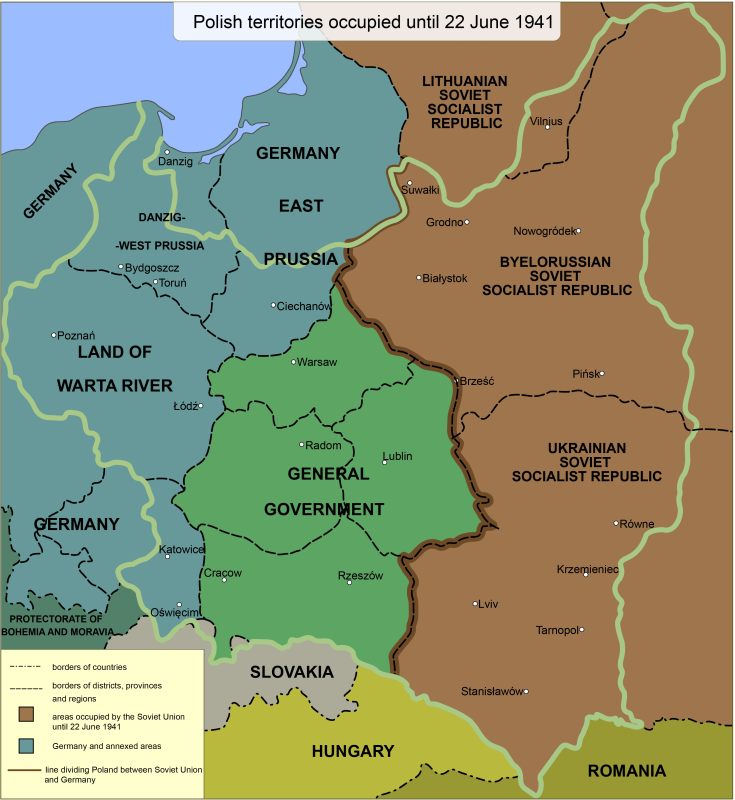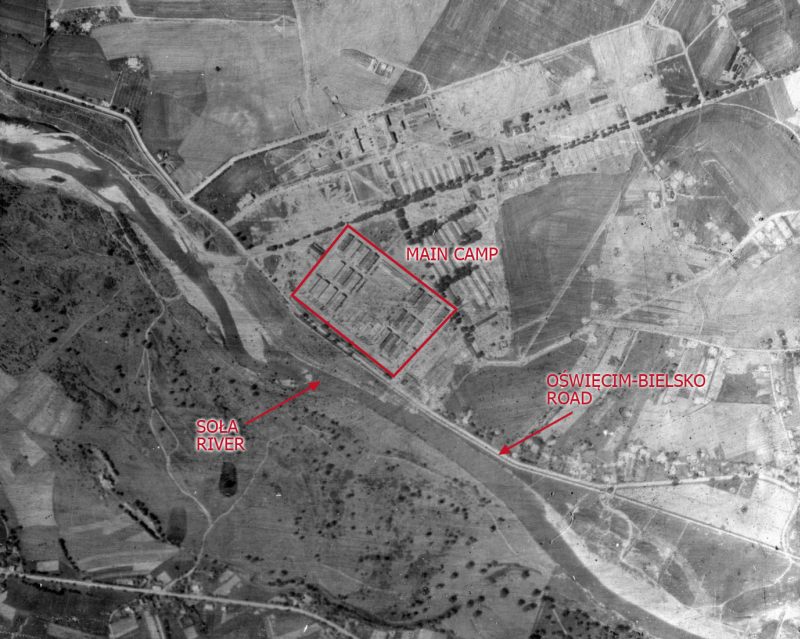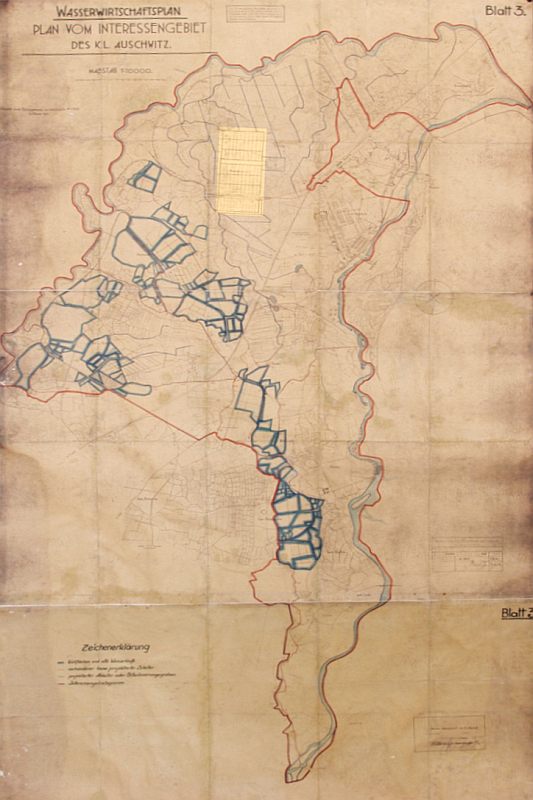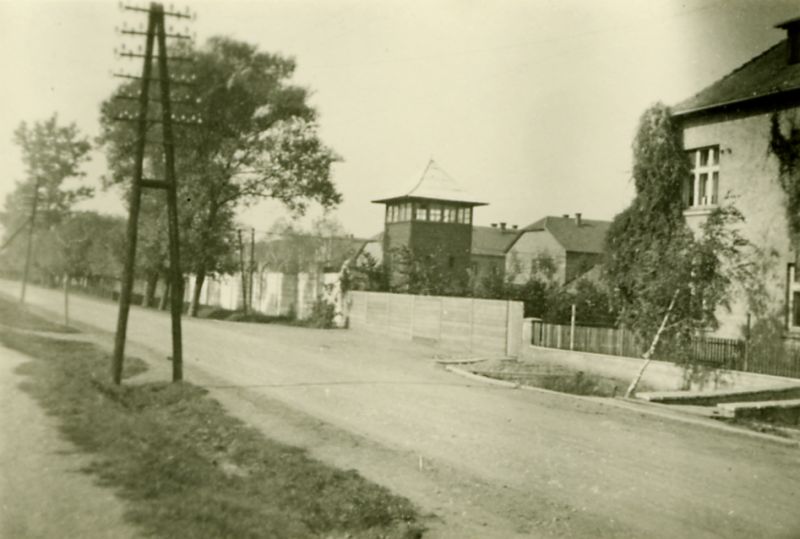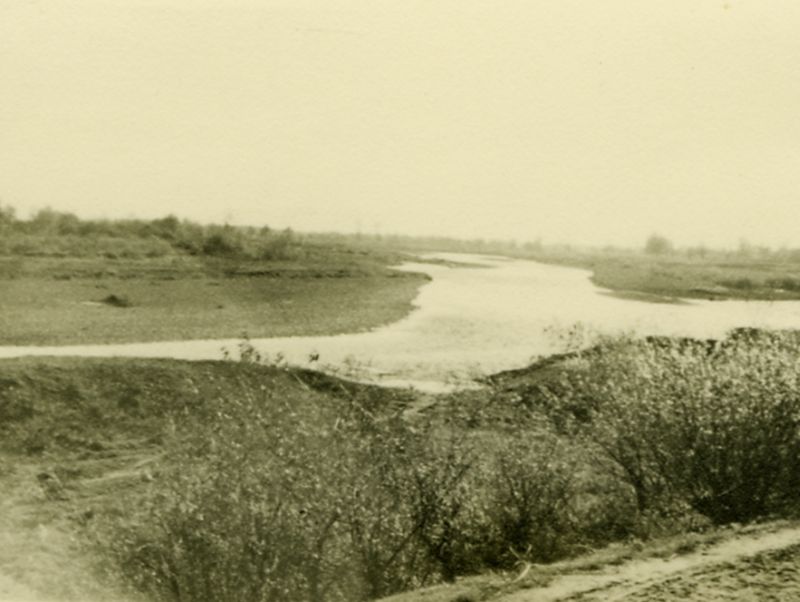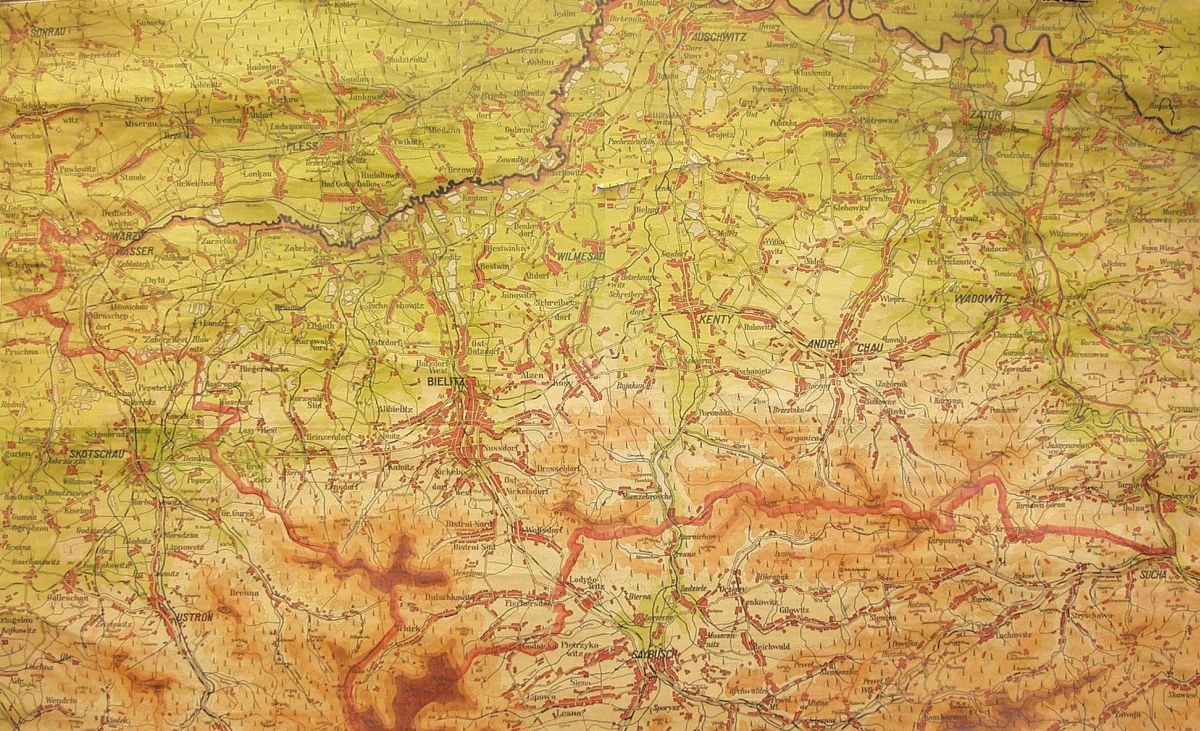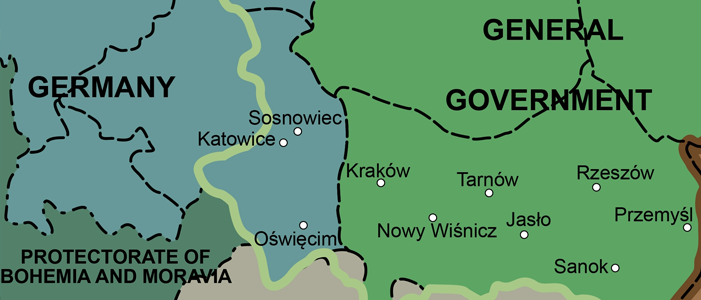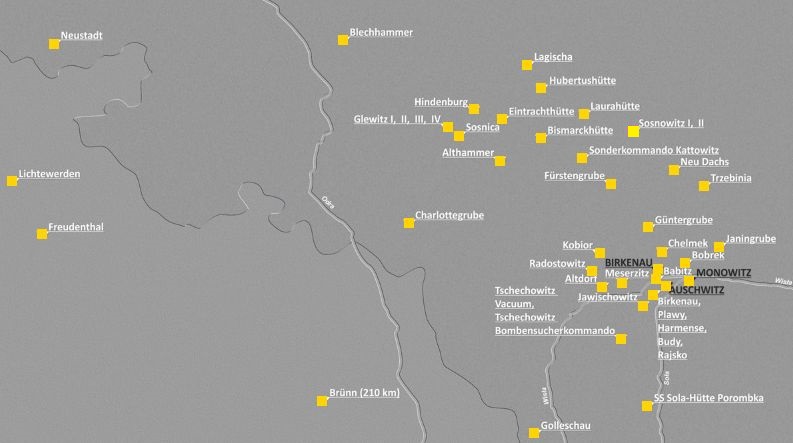The city of Oświęcim (Auschwitz) was located within the territory annexed to the Reich. According to the new administrative division, it became part of the Bielsko district (Kreis Bielitz) in Katowice region (Regierungsbezirk Kattowitz), Silesian province (Provinz Schlesien). As the territories incorporated into the Reich were supposed to undergo Germanization, the Polish name of the city was replaced with the German one—Auschwitz. The same name received a concentration camp created by the Germans on the outskirts of Oświęcim in the spring of 1940.
The concentration camp (German: Konzentrationslager—KL) Auschwitz was located on the outskirts of the city, near the road leading from the city centre through Brzeszcze to Bielsko and Pszczyna. Following the expulsion of Polish and Jewish residents from the territories located in the vicinity of the camp as well as from eight villages located to the west of Oświęcim, German authorities created in 1941 the so-called Auschwitz interest zone (Interessengebiet des Auschwitz) embracing the territory of approx. 40 sq km. The western and northern borders of the zone were marked by the Vistula river, eastern by the river Soła, while southern as well as south-eastern border ran along the roads, dikes and creeks crossing the villages of Brzeszcze, Przecieszyn, Jawiszowice and Zasole (Łęki-Zasole at the time). Within the zone, Birkenau camp was created (on the fields of the village of Brzezinka, the inhabitants of which had been expelled) along with several agricultural and livestock farming sub-camps. The entire area was patrolled by the SS men, and the Poles residing nearby
could only move on designated roads.

